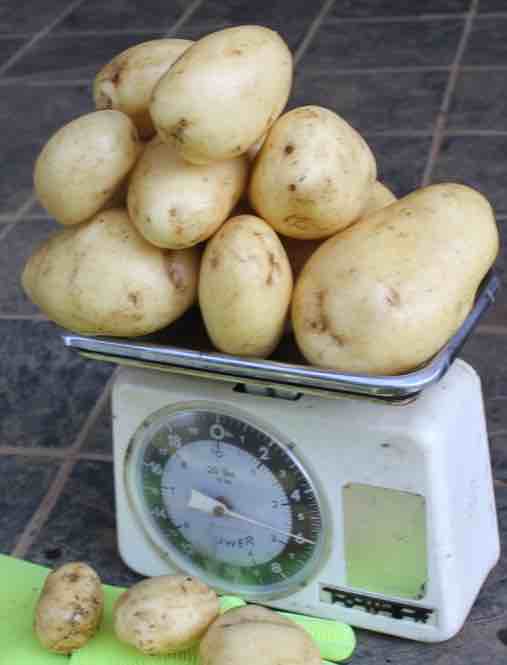- Bernard Preston homepage
- Hummus
- What Food Has the Most Vitamin B6
What food has the most Vitamin B6?
What food has the most vitamin B6, belonging in the anti-frailty group of four essential micronutrients?
The elderly absolutely must have all four of these vitamins from their food regularly.
You cannot enjoy sparkling well-being without plenty of vitamin B6 food; researchers are suggesting we need far more than we are actually getting.
Disturbing research on the development of frailty found that taking vitamins
in supplements did little to halt the relentless premature progress of aging[1]. Rather we should get these micronutrients from our food; B6 may be the exception.
This page was updated by Dr Bernard Preston on 9th November, 2024.
 What food has the most vitamin B6?
What food has the most vitamin B6?Or as Hippocrates, the father of Western healthcare put it "let your food be your medicine."
Vitamin B6 is really a family of six different forms. Each of them has the prefix "pyridox" in its name.
Pyridoxine is probably the best recognised of the six.
The most active derivative, found mainly in muscle is PLP or pyridoxal 5-phosphate. It plays an essential role in over 100 enzyme reactions in the body that would certainly be inhibited by a deficiency of vitamin B6 food.
Many of them have to do with the management of glucose in the cells; and the synthesis of neurotransmitters like dopamine from its precursor. So clearly it has a very important role to play in diabetes and the degenerative conditions like Parkinson's disease.
Dopamine is produced in the body in two places; a nucleus in the brain called the Substantia Nigra and the cells lining the colon. But only if it's a happy tum. That is one that has a full complement of friendly bugs; and plenty of dietary fibre to keep them satisfied.
Vitamin B6 anaemia
Haemoglobin in the blood carries oxygen from the lungs to the tissues; it is made up of two parts.
- Haem is the iron component.
- The protein fraction is globin.
Vitamin B6 is essential at two levels; firstly in the synthesis of haem.
And secondly in enabling haemoglobin to bind oxygen in the lungs and release it in the tissues of the body.
A deficiency causes a vitamin B6 anaemia which is clearly central to the development of frailty in the older person.
Vitamin B6 and Parkinson's disease
Vitamin B6 is essential in the reaction in which dopamine is formed from L-D[4] in a nucleus in the brain known as the Substantia Nigra.
This neurotransmitter is essential in many pathways; in the brain where a deficiency causes Parkinson's disease. And also in the colon where it stimulates the muscles facilitating normal contractions of the gut.
It comes as no surprise thus that researchers reporting in BMC Geriatrics[3] state that there is an association between low vitamin B6 food intake, Irritable Bowel Syndrome and constipation.
Mood and bone strength
Vitamin B6 acts as an essential coenzyme in the synthesis of another important neurotransmitter called serotonin. It has many functions; notably as a mood-stabiliser and in normal bone formation.
In fact B6 is necessary for amino acid metabolism; the breakdown of virtually all protein.
A B6 deficiency contributes to the development of dystonias, constipation and depression; and osteoporosis, clearly significant in the progression of frailty.
Worse is that the Parkinsonian medication interferes with B6 metabolism.
Vitamin B6 and inflammation
There have been many studies linking a deficiency of vitamin B6 to chronic inflammation in the body. This is in part due to its important role in denaturing homocysteine, a breakdown product of protein-metabolism.
This page on homocysteine and cardiovascular disease explains it in some detail.
Chronic inflammation means inter alia cardiovascular problems, muscle and joint pains; all contributors to the development of frailty.
Blood sugar
The stabilisation of blood sugar is not only from carbohydrate metabolism; the body also uses the break down of amino acids and fats, known as gluconeogenesis.
It is here that B6 plays a vital role in glucose metabolism, helping to prevent low levels of blood sugar; known as hypoglycemia.
It is also an essential cofactor[2] in the break down of glycogen, the primary carbohydrate stored in muscle tissues and the liver.
This is known as glycogenolysis to release glucose for use during exercise.
What food has the most vitamin B6?
What food has the most vitamin B6 that along with three other equally important micronutrients all help to prevent us from becoming feeble long before our time?
To be effective this vitamin B6 must be obtained from our meals; many people show signs of low levels in the blood despite taking
tablets. The richest sources are these common foods.
- Fatty fish
- Chicken
- Potatoes
- Bananas
- Red meat
- Chickpeas and other legumes
 New potatoes.
New potatoes.What other foods have the most vitamin B6?
- 100% wholewheat flour
- Cottage cheese
- Butternut squash
- Nuts and raisins
- Onions, spinach and watermelon
In short none of us should be deficient in vitamin B6 food; but we are.

This Swiss new potato rösti made with added squash is a very rich source of vitamin B6; incredibly delicious. It is crispy on the outside with a soft centre.
B6 enemies
Low protein foods
A narrow diet deficient in the protein from legumes, chicken or meat is the greatest of the B6 enemies; fish too, of course. If we add to that minimal fruit, greens and nuts then one is almost certain to become prematurely frail.
Vegetarians of course have shown that one can be perfectly strong
without fish, fowl and red meat. Generally they do eat eggs and dairy
products though; nuts and seeds too, of course.
Vegans have to be more careful.
Alcohol
Alcohol too inhibits the absorption of B6 in the gut.
Researchers in the USA have found that many people have low levels of circulating B6 in their blood.
A diminished microbiome
This also invites questions about the abundance of the normal flora in the gut. Many of these bacteria do synthesise the B vitamins; we would all benefit from probiotics like sauerkraut and kefir on a regular basis.
This is particularly true if we have recently been on antibiotics; or
eat a lot of food laced with chemicals like preservatives. Artificial
sweeteners have also been fingered.
The B vitamins are water-soluble and some are lost in the liquid used to cook our food.
Steaming, sauteing and using that veggie water in soups is the way to go; do not just pour those nutrients down the drain.
The innovative Xhosa people in South Africa have long enriched their grits with greens; we have been experimenting with using the leftover water after cooking spinach for making our cornmeal porridge.
Old age homes
There is very disturbing research into the B6 status of those in old age homes; scientists found that only 27% were at no risk from malnutrition and frailty.
"Poor nutritional status, old age and low s-albumin were related to the overall poor health of subjects with B6 deficiency; and inactivity too."
- BMC Geriatrics[3]
We find it interesting that in five distinct areas of the world where Blue Zone longevity is the norm that old-age homes simply do not exist. Yet a large proportion of elderly folk reach their nineties, strong and vigorous to the end; and ten times as many to a golden century.
They remain either living alone or with their children; they grow and consume much of their food from their own gardens.
Malnutrition is far more prevalent when eating institution food.
How to cook chickpeas
Learning how to cook chickpeas, also known as garbanzo-beans is a huge step towards ensuring that you are getting enough vitamin B6 food. Then freeze the surplus so they are readily available for stews, soups and hummus.
 Frozen packets of cooked chickpeas
Frozen packets of cooked chickpeasNewsletter
Our newsletter is entitled "create a cyan zone" at your home, preserving both yourself and Mother Earth for future generations; and the family too, of course. We promise not to spam you with daily emails promoting various products. You may get an occasional nudge to buy one of my books.
Here are the back issues.
- Lifestyle and ideal body weight
- What are ultra-processed foods?
- Investing in long-term health
- Diseases from plastic exposure
- Intensive lifestyle management for obesity has limited value
- A world largely devoid of Parkinson's Disease
- The impact of friendly bacteria in the tum on the prevention of cancer
- There's a hole in the bucket
- Everyone is talking about weight loss drugs
- Pull the sweet tooth
- If you suffer from heartburn plant a susu
- Refined maize meal and stunting
- Should agriculture and industry get priority for water and electricity?
- Nature is calling
- Mill your own flour
- Bake your own sourdough bread
- Microplastics from our water
- Alternative types of water storage
- Wear your clothes out
- Comfort foods
- Create a bee-friendly environment
- Go to bed slightly hungry
- Keep bees
- Blue zone folk are religious
- Reduce plastic waste
- Family is important
- What can go in compost?
- Grow broad beans for longevity
- Harvest and store sunshine
- Blue zone exercise
- Harvest and store your rainwater
- Create a cyan zone at your home
Frailty syndrome
A vitamin B6 anaemia obviously reduces the oxygen carrying-capacity of the blood. That would contribute to at least two of the cardinal signs of frailty syndrome; depressed energy levels and slowed walking speed.
The "tea and toast" breakfast of so many elderly people is obviously one major cause.
Research
When browsing use right click and "Open Link in New Tab" or you may get a bad gateway signal.
Did you find this page interesting? How about forwarding it to a friendly book or food junkie? Better still, a social media tick would help.
- Bernard Preston homepage
- Hummus
- What Food Has the Most Vitamin B6
Address:
56 Groenekloof Rd,
Hilton, KZN
South Africa
Website:
https://www.bernard-preston.com